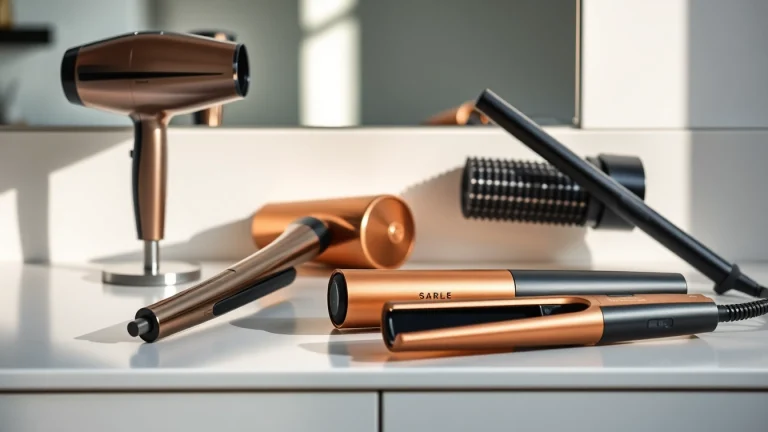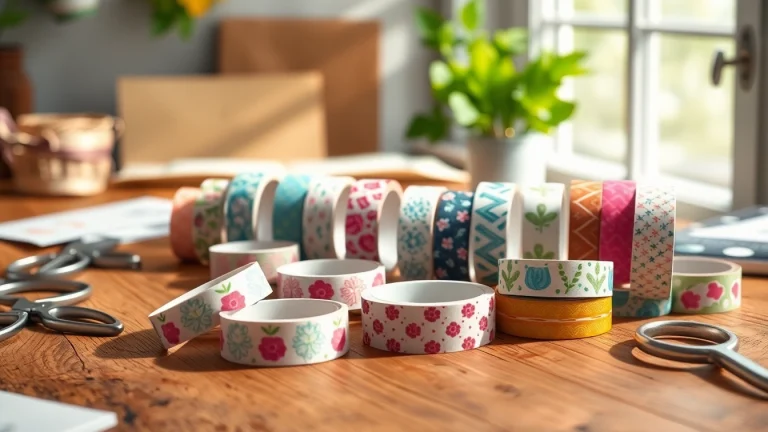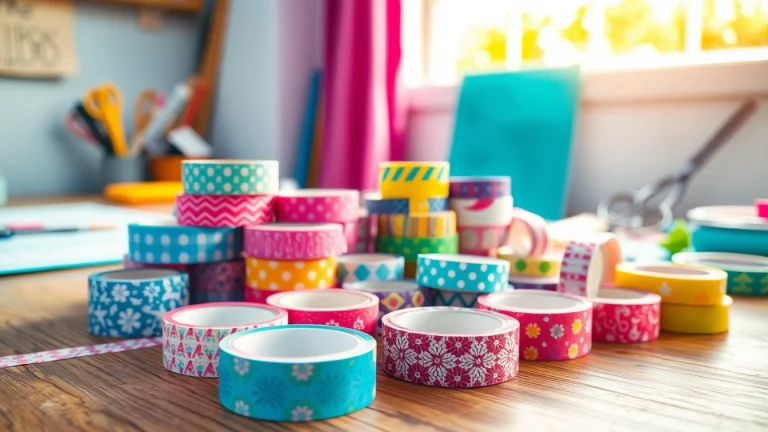
Essential Heat Tools for Hair: Upgrade Your Styling Routine with Our Top Picks
Understanding Heat Tools for Hair
In today’s world, heat styling tools have become essential components of our daily grooming routines. Whether you are looking to straighten, curl, or add volume to your hair, various heat tools for hair can help you achieve your desired look quickly and efficiently. Understanding these tools and how they function is crucial for proper care and maintenance of your hair.
What Are Heat Tools and How Do They Work?
Heat tools for hair are devices that utilize thermal energy to style hair. This category includes hair dryers, curling irons, flat irons, and hot brushes. Each tool operates on the principle of applying heat to alter the structure of hair temporarily. The high temperatures break the hydrogen bonds in the hair fiber, which allows the hair to reshape. The way these tools apply heat can vary significantly, affecting the end result and the health of your hair.
The Importance of Heat Settings for Different Hair Types
One of the key aspects of using heat tools effectively is understanding the importance of heat settings tailored to different hair types. Fine or damaged hair typically requires lower temperatures (around 250°F to 300°F) to prevent further damage. In contrast, thick or coarse hair may respond better to higher temperatures (350°F to 400°F) to effectively manage frizz and achieve the desired shape.
Moreover, improper temperature settings can lead to irreversible damage, making it essential for users to familiarize themselves with their own hair types and sensitivities.
Common Myths About Heat Styling Tools
There is a plethora of myths surrounding heat styling tools. One prevalent belief is that all heat tools are harmful and should be avoided entirely. While excessive use can damage hair, utilizing them properly and incorporating protective products can mitigate the risks. Another myth is that expensive tools are always better. However, there are numerous affordable options that perform exceptionally well and suit various hair types.
Types of Heat Tools Available
With a myriad of heat styling tools available on the market, it’s essential to understand their distinct functions and advantages. Here, we explore the most common types of heat tools.
Curling Irons: Creating Beautiful Waves
Curling irons are designed to create waves and curls by wrapping sections of hair around a heated barrel. They come in various sizes, allowing for different curl tightness and styles. For instance, a larger barrel will create loose, beachy waves, while a smaller barrel is better for tight curls. Temperature settings and barrel material can also influence the type of curls produced, making it important for users to select the right curling iron based on their hair type and desired outcome.
Straighteners: Achieving Sleek and Smooth Styles
Also known as flat irons, these tools are primarily used to straighten hair. They work by clamping sections of hair between two heated plates, effectively smoothing out any waves or kinks. Like curling irons, straighteners also vary in plate material—ceramic, tourmaline, and titanium each offer distinct advantages. Ceramic plates provide even heat distribution, while tourmaline plates generate negative ions that help reduce frizz.
Heat Brushes: Combining Drying and Styling
Heat brushes are a versatile option that combines the functionalities of a brush and a heated styling tool. They allow users to simultaneously style and dry their hair, making them ideal for those with busy schedules. Heat brushes provide a gentler approach to styling, minimizing hair damage while offering a sleek finish.
Choosing the Right Heat Tool for Your Hair
Selecting the appropriate heat tool can significantly impact both your styling results and the health of your hair. Here are some considerations to keep in mind when choosing your tools.
Assessing Your Hair Type and Needs
Before investing in heat tools, assess your hair type and specific needs. Fine hair benefits from lightweight, low-heat tools to avoid breakage, while thicker hair can handle tools with higher heat settings. Understanding your hair texture, length, and previous treatment history will aid in making the right choice.
Key Features to Look for in Heat Tools
When selecting heat styling tools, consider several key features:
- Temperature Control: Look for tools with adjustable heat settings to suit your hair type.
- Quality of Materials: Tools made with ceramic, tourmaline, or titanium tend to provide better heat distribution and styling results.
- Safety Features: Automatic shut-off and heat-resistant handles can help prevent accidents and injuries.
Budget-friendly vs. Professional Options
The market offers a wide range of heat tools across various price points. While professional-grade tools can offer superior results and longevity, many budget-friendly options effectively meet styling needs. It is crucial to balance your budget with the features and quality that meet your demands without compromising your hair’s health.
Tips for Safe Use of Heat Tools
Using heat tools correctly can reduce the risks of damage while promoting healthier hair. Here are some essential tips for safe usage.
Preparing Your Hair for Heat Styling
Prepping your hair before using heat tools can make a noticeable difference. Start with a heat protectant spray, which forms a barrier against high temperatures. Additionally, ensure your hair is clean and dry, as damp hair is more susceptible to damage from heat tools.
Best Practices for Minimizing Damage
To minimize damage, avoid using heat styling tools on a daily basis. Try to limit usage to a few times per week, and consider air-drying your hair whenever possible. Incorporate nourishing hair products that provide moisture and repair to counterbalance the drying effects of heat styling.
Aftercare: Keeping Your Hair Healthy
Aftercare is just as crucial as preparation. Use hydrating masks and leave-in conditioners to restore moisture. Regular trims can also help eliminate split ends, keeping your hair looking fresh and healthy. Being mindful of your routine will significantly enhance your hair’s health over time.
Innovative Features in Modern Heat Tools
Advancements in technology have led to the development of innovative features in heat tools that enhance performance and user experience. Here are some that are changing the game:
Choosing Tools with Heat Protection Technology
Many modern heat tools come with built-in heat protection technology. This feature helps to evenly distribute heat and prevent damaging hotspots that can lead to hair breakage. Investing in tools with such technology can significantly improve the health of your hair over time.
Wireless Options: Benefits and Drawbacks
Wireless heat tools are becoming increasingly popular due to their convenience and portability. They offer the freedom to style without being tethered to an outlet. However, it’s essential to consider battery life and performance as they may not deliver the same consistent heat as traditional wired tools.
Smart Technology: The Future of Heat Styling
Smart heat styling tools equipped with technology that learns and adjusts to your specific hair needs are emerging on the market. These tools can provide an ideal temperature for your hair type and can even send alerts or notifications to your smartphone, enhancing the styling experience.


